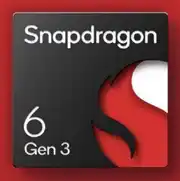Samsung Exynos 1280

Samsung Exynos 1280: a Balance of Power and Energy Efficiency in the Mid-Range Segment
April 2025
Mobile processors are the heart of modern smartphones, determining their performance, battery life, and capabilities. In 2025, one of the key chips for mid-range devices remains the Samsung Exynos 1280. Let’s explore what sets it apart from competitors, who it is suited for, and which smartphones utilize it.
1. Architecture and Process Technology: 5 nm for Balance
The Exynos 1280 is built on a 5-nanometer process, ensuring high energy efficiency. This is particularly important for devices focused on battery life.
CPU: 8-Core Hybrid Structure
- 2 High-Performance Cortex-A78 Cores with a frequency of up to 2.4 GHz: responsible for resource-intensive tasks (gaming, video rendering).
- 6 Energy-Efficient Cortex-A55 Cores at 2.0 GHz: handle background processes, calls, and social networks.
This configuration allows for load distribution, avoiding overheating and excessive battery consumption.
GPU: Mali-G68 MP4
The Mali-G68 MP4 graphics accelerator is a 4-core version of the Valhall architecture. It supports:
- Resolution up to FHD+ at 120 Hz;
- API Vulkan 1.3, OpenGL ES 3.2;
- Basic ray tracing for improved shadows and lighting in games.
Technologies
- Artificial Intelligence: built-in NPU (Neural Processing Unit) for photo optimization, voice assistants, and data analysis.
- Supports LPDDR4X RAM (up to 12 GB) and UFS 3.1 for fast app loading and smooth multitasking.
2. Performance: From Gaming to AI
Gaming
The Exynos 1280 handles most games at medium settings:
- Genshin Impact: 35–40 FPS (Medium, 720p);
- Call of Duty: Mobile: 60 FPS (High, 1080p).
More demanding games (such as Honkai: Star Rail) will require lowering the graphics to Low.
Multimedia
- Video recording: 4K@30fps or 1080p@60fps.
- Playback: HDR10+, AV1 decoding for streaming.
- Audio: 32-bit DSP for real-time noise cancellation.
AI Applications
The NPU accelerates tasks such as:
- Photos: automatic portrait retouching, night shot enhancement;
- Video: EIS 3.0 stabilization;
- Voice assistants: real-time speech recognition without lag.
Power Consumption and Heat
With a TDP of 6W, the chip remains cool even under load. In tests:
- 1 hour of gaming results in a battery consumption of 12–15% (with a capacity of 5000 mAh);
- Standard use (social media, YouTube) — up to 2 days of operation.
3. Integrated Modules: Connectivity at Its Best
- Modem: integrated 5G NSA/SA (up to 3.3 Gbps), 4G Cat.24 (up to 2 Gbps).
- Wi-Fi 6: speeds up to 1.2 Gbps, low latency for online gaming.
- Bluetooth 5.3: supports two devices simultaneously (for example, headphones and smartwatches).
- Navigation: GPS, GLONASS, Galileo, BeiDou. Accuracy — up to 1 meter in urban settings.
4. Comparison with Competitors
Exynos 1280 vs Snapdragon 7 Gen 3
- Snapdragon 7 Gen 3: higher GPU frequency (Adreno 725 vs Mali-G68 MP4), better game optimization. However, Exynos wins in energy efficiency.
- AnTuTu 10: 490K vs 520K for Snapdragon.
Exynos 1280 vs MediaTek Dimensity 9200
- Dimensity 9200 is more powerful (AnTuTu ~650K), but more expensive. Exynos is the choice for devices up to $400.
Generational Comparison: Exynos 1280 is 15% faster than the Exynos 1080 (2023) due to 5nm optimization.
5. Use Cases
Gaming
Suitable for casual games (Candy Crush, Among Us) and medium settings in AAA titles. Hardcore gamers should look for flagship devices.
Daily Tasks
- Smooth One UI 7 interface (on Android 15);
- Simultaneous operation with 5–7 applications;
- Fast loading of web pages and documents.
Photo and Video
- Shooting with a 108 MP camera without lags;
- Night mode with AI noise reduction;
- Vlogging with smooth stabilization.
6. Pros and Cons
Pros:
- Energy efficiency with 5nm process;
- Support for 5G and Wi-Fi 6;
- Affordable device pricing.
Cons:
- Mali-G68 MP4 is weaker than Adreno in Snapdragon;
- Limitations in video recording (no 8K).
7. Practical Tips When Choosing
- RAM: a minimum of 6 GB, preferably 8 GB for gaming.
- Battery: at least 5000 mAh for comfortable use.
- Cooling: smartphones with a vapor chamber (for example, Samsung Galaxy A55 2025) heat up less.
- Price: devices with Exynos 1280 cost $300–$450. Examples of models:
- Samsung Galaxy A55 5G ($399);
- Vivo Y78 ($329);
- Realme 11 Pro+ ($369).
8. Final Conclusion: Who is Exynos 1280 Suitable For?
This processor is an optimal choice for those who seek:
- Reliability: stable operation of the OS and applications;
- Battery Life: up to 2 days without recharging;
- Future with 5G: readiness for next-generation networks.
The Exynos 1280 is ideal for students, office workers, and users who value a balance between price and quality. It may not deliver record-breaking performance but will be a reliable companion for everyday tasks.
P.S. When purchasing, pay attention to software updates: Samsung guarantees 4 years of security updates and 3 generations of Android for its devices. This will prolong the life of your smartphone even in 2025!
Basic
6x 2 GHz – Cortex-A55
GPU Specifications
Connectivity
Memory Specifications
Miscellaneous
Benchmarks
Phones with Exynos 1280




Comparison of Devices with Exynos 1280
Compared to Other SoC
Share in social media
Or Link To Us
<a href="https://cputronic.com/soc/samsung-exynos-1280" target="_blank">Samsung Exynos 1280</a>



